High on a hill in the mountains of Sintra, Portugal sits the beautiful Palace of Pena. Originally constructed as a 15th Century monastery that was severely damaged by an earthquake in 1755, the Palace occupies 85 acres. Arriving at the palace gates requires one to navigate a lengthy series of hairpin turns on a steep and narrow cobblestone road before hiking an additional mile or so on foot up the steep hillside, but it is worth the effort.
Like so many of the buildings we’ve seen along the way, the architectural design of the palace contains a great deal of symbolism. The entry gate retains markings of its beginnings as a monastery: the hand above the arch signifies the right hand of God presiding over the place. Continuing up the walkway, another arch portrays the four stations of the cross. Four wolfskins adorn the top of the same entry symbolizing the King’s Masonic membership, and snakes carved into the columns signify the union between the royal couple’s two countries, Germany and Portugal. The first royal family moved into the palace in 1847. In 1885 the King who was living in the palace was assassinated, along with his son. His wife and remaining son immediately fled the area, taking very little of their possessions with them. The state of Portugal assumed ownership of the palace and turned it into a museum, leaving it almost exactly as it was when the Queen and young prince fled.
After lunch in the town of Sentra, we headed to Caba da Roca, the westernmost point of continental Europe, long thought by some to be the end of the world. When you stand at the edge of the 500-foot rocky ledge, with nothing but sea as far as they eye can see, it is easy to understand how one might draw that conclusion. This cape is where north and south winds meet, and they are in a serious battle for superiority. It’s all you can do to stand up straight as your blasted by gusts from all sides. Not even the pine trees can grow here; the severe winds keep them from ever becoming more than mere bushes hugging the ground for survival.
Further along the coast is the seaside town of Cascais, known for its sandy beaches. Cascais was the first “resort” city in Portugal and the first city in the country to have electricity. American singer Brian Williams spent part of his childhood here, and has said his song, “The Summer of ’69” was inspired by his time in Cascais.
Oh! And we learned something new today. Do you know where the word “tea” comes from? Turns out it is an anagram for: Transportation Herbs Aromatic. Turns out a Portuguese woman became the Queen of England in the 16th Century, bringing with her love of herbs steeped in hot water. The King would have the herbs shipped to England, and on the boxes was stamped: “Herbs Aromatic Transportation,” which became TEA. You learn something new every day!
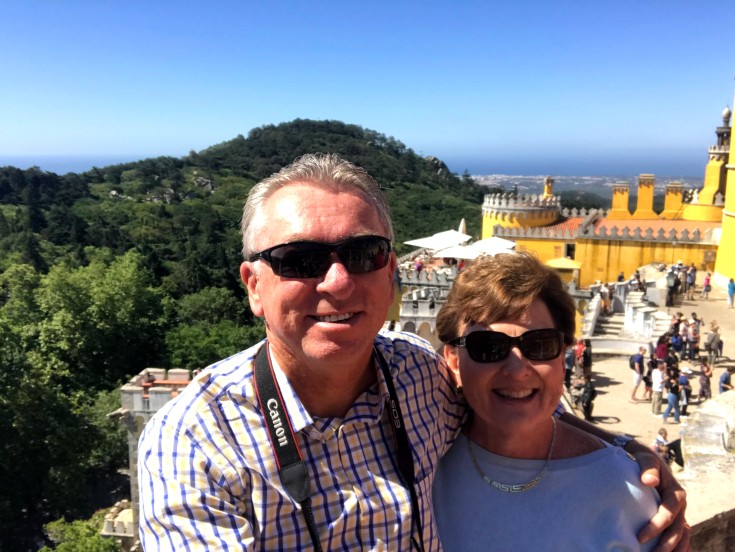
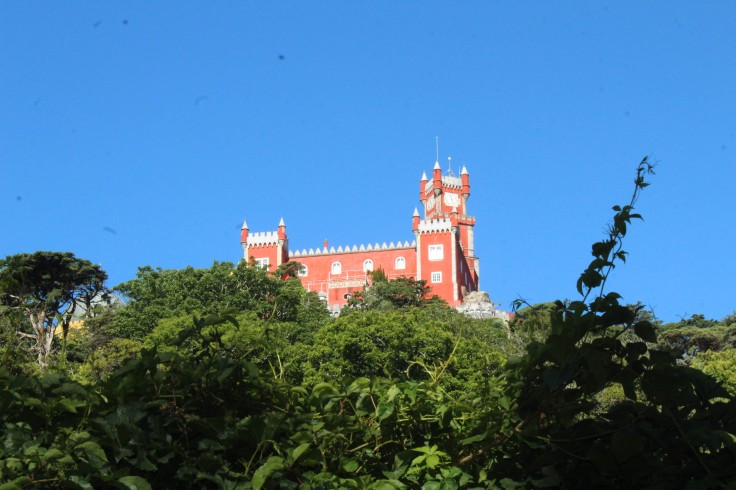
Palace of Pena sits high on a hill 

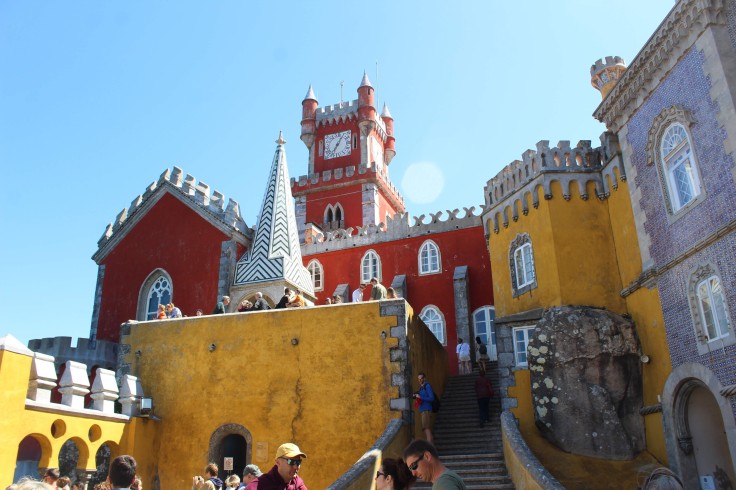
Notice all the details on the building 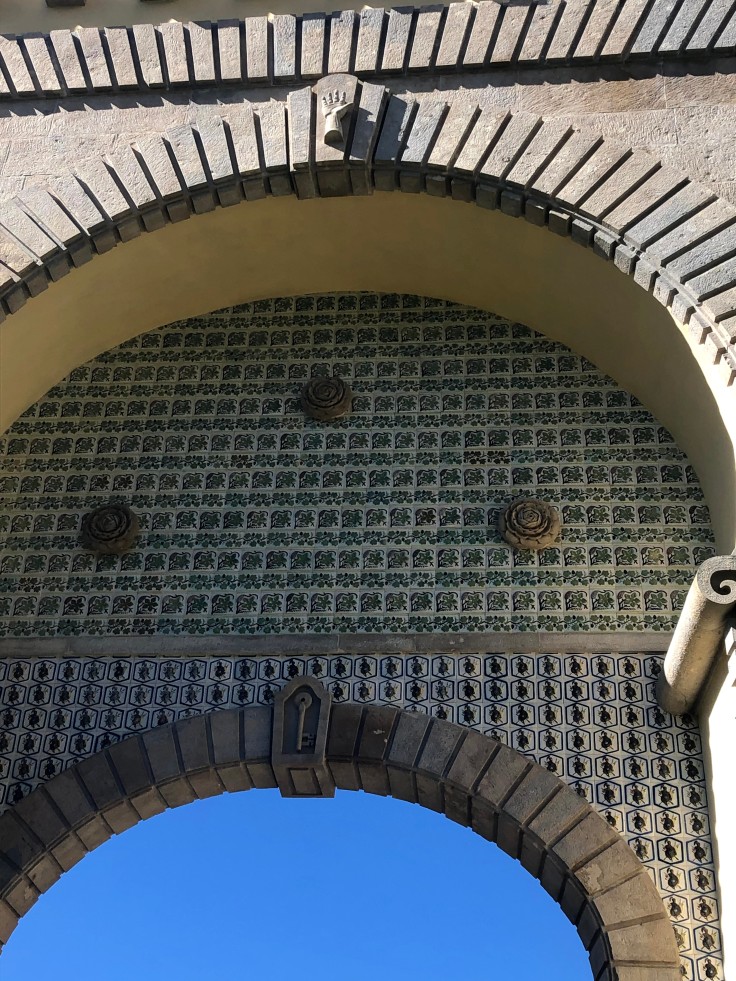
The hand above the entry signifies the right hand of God – a holdover from the castle’s days as a monastery 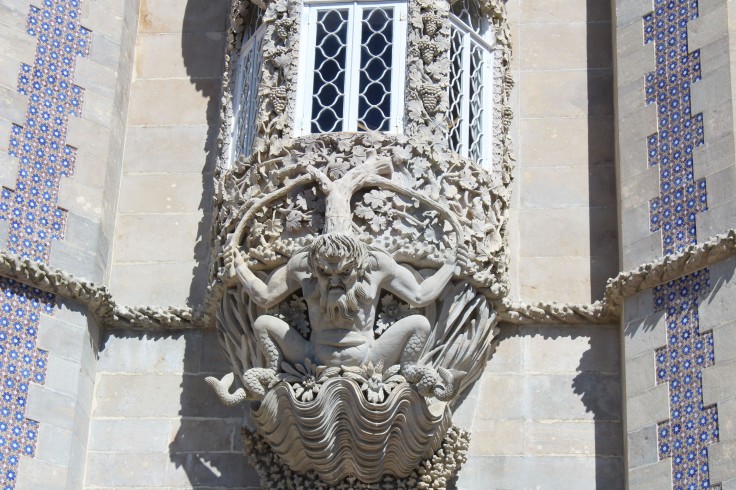

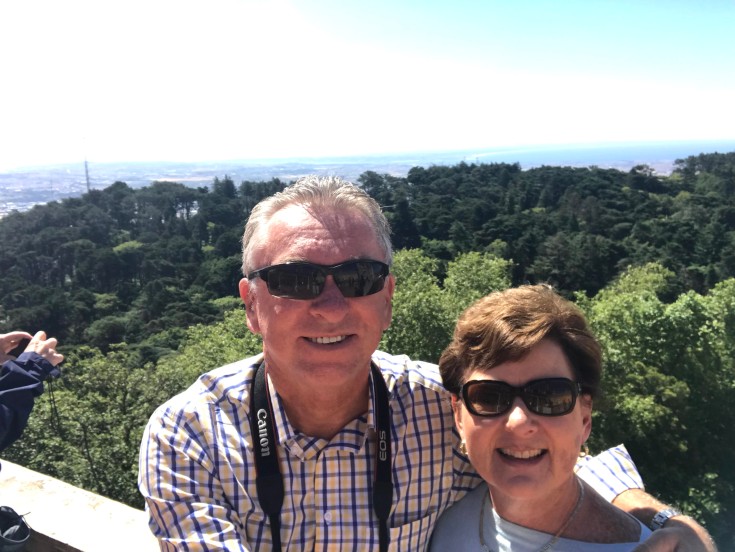
The castle comes with a beautiful view 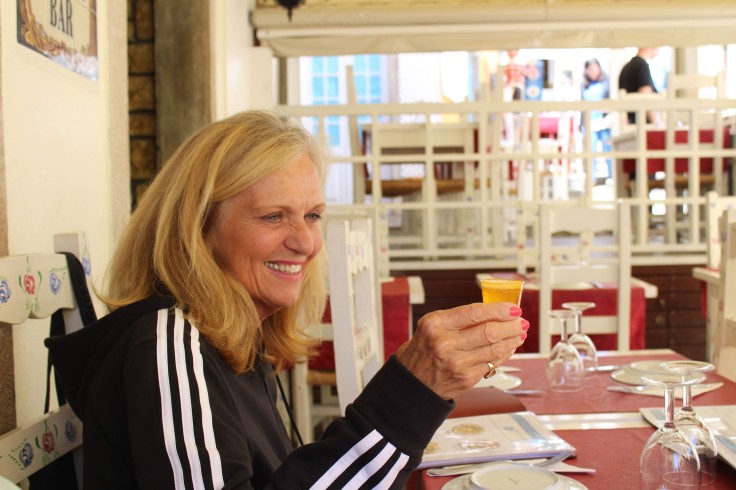
We had a hilarious waiter with a great sense of humor. The guys ordered large beers and here’s what he brought! 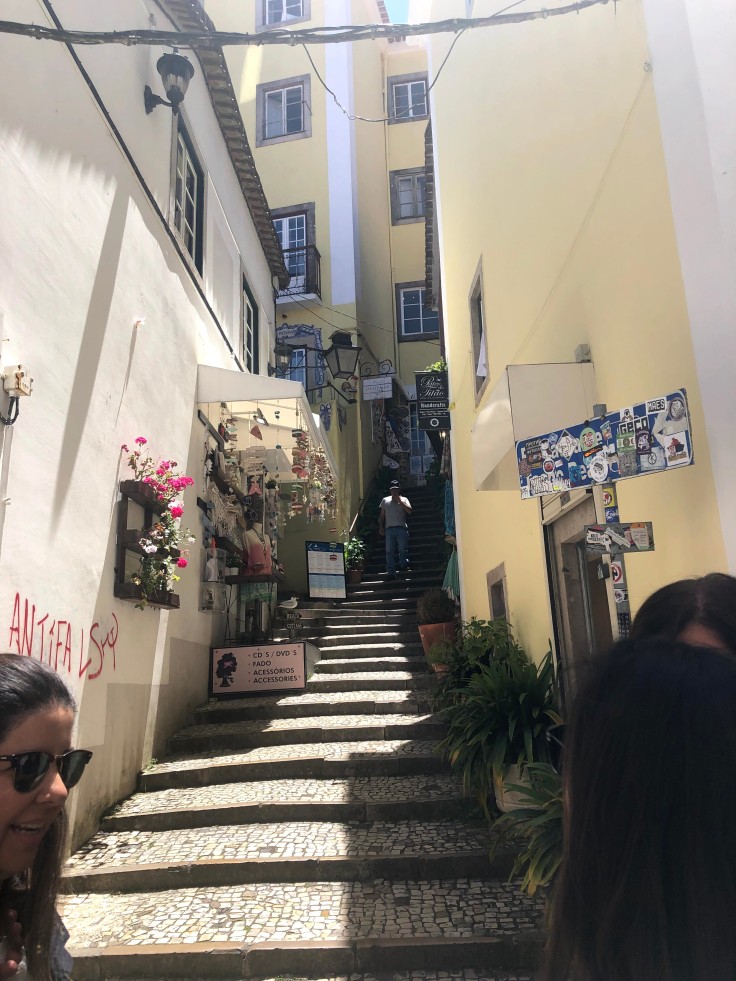
The alleyways of Sentra 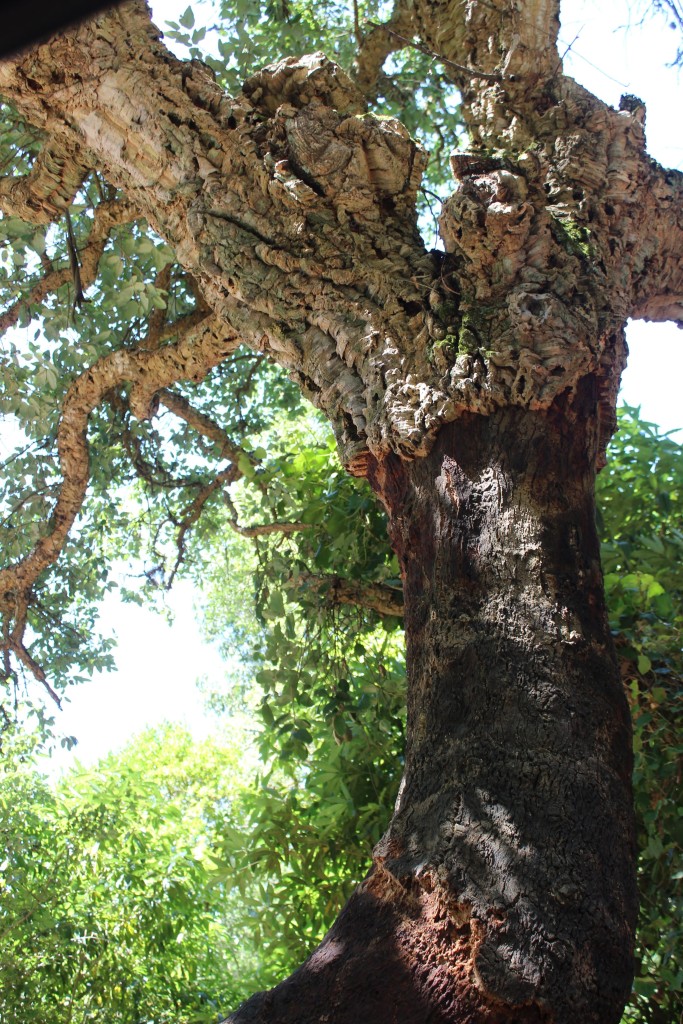
One of the things Lisbon is known for is its production of cork. This is a cork tree. The lower bark (cork) has been stripped and will regrow in about 7 years to be harvested again. 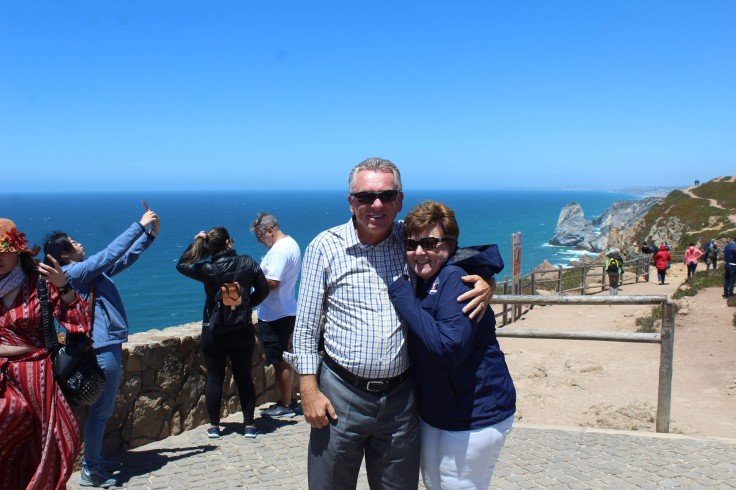
It’s cold at the end of the world!!! 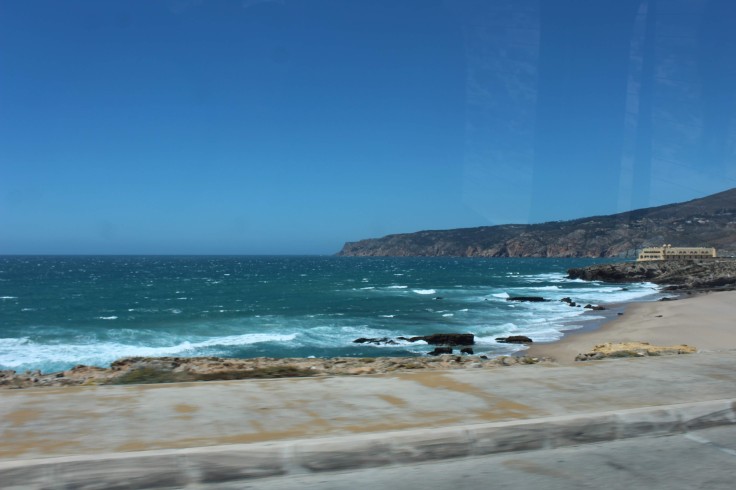
The beaches of Caiscais
